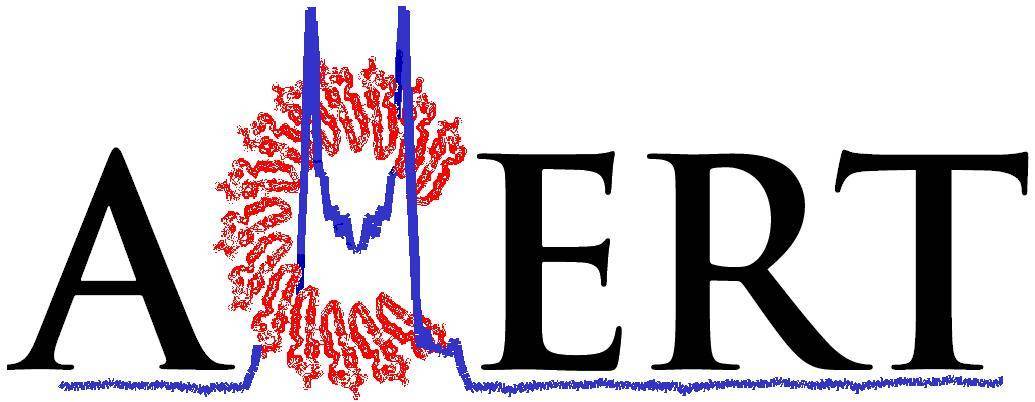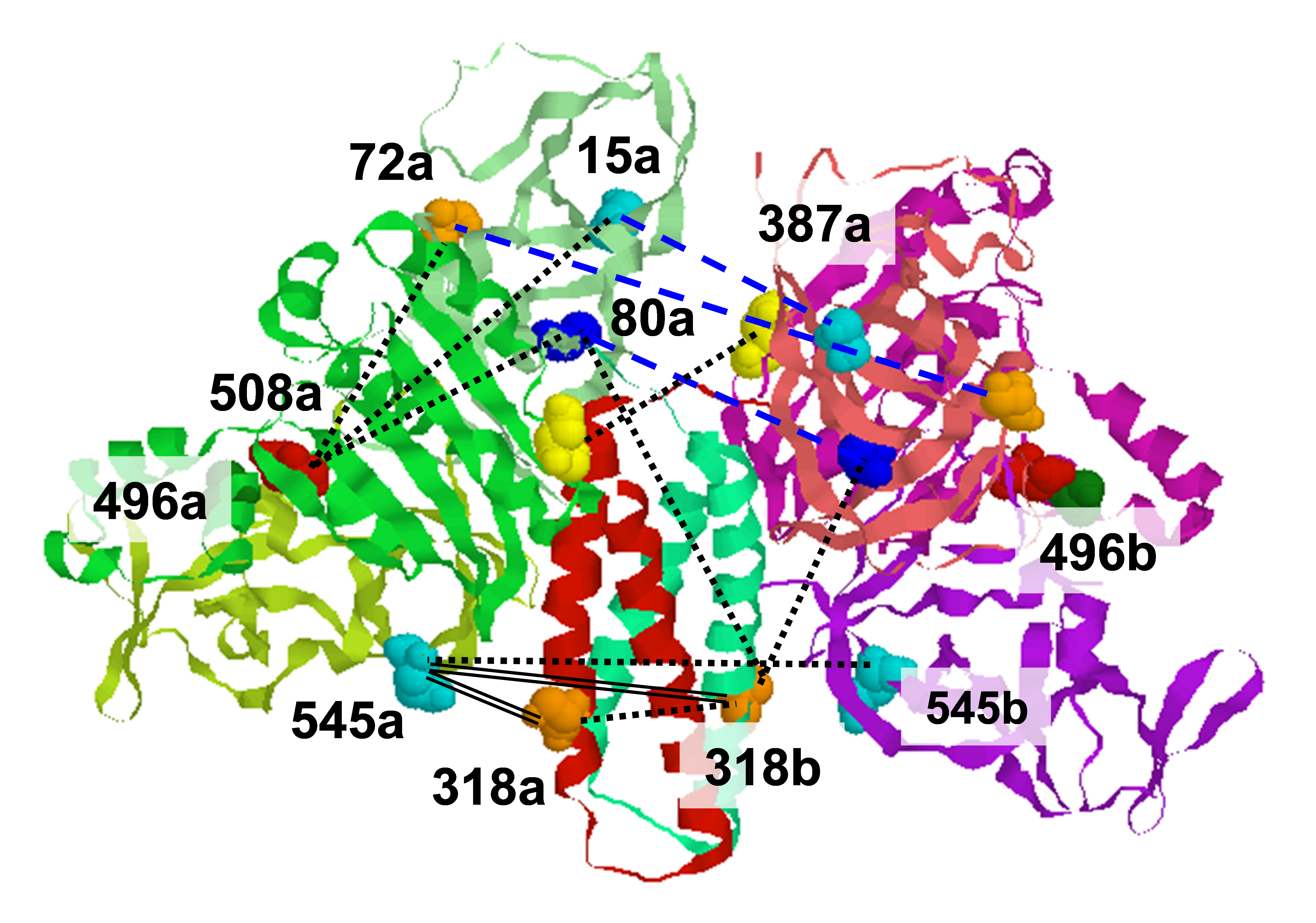.svg) National Institute of General Medical Sciences |
 |
 |
National Biomedical Resource for |
| ACERT's Service and Collaborative Projects | |
RGD (arginine-glycine-aspartic acid) is a prolific example of a tripeptide used in biomaterials for cell adhesion, but the potency of free or surface-bound RGD tripeptide is orders-of-magnitude less than the RGD domain within natural proteins. We designed a set of peptides with varying lengths, composed of fragments of fibronectin protein whose central three residues are RGD, in order to vary their conformational behavior without changing the binding site’s chemical environment. (See left part of Fig.) With these peptides, we measure the conformational dynamics and transient structure of the active site. Our ESR studies (cf. right part of Fig.) reveal how flanking residues affect conformational behavior and integrin binding. We find that disorder of the binding site is important to the potency of RGD peptides and that transient hydrogen bonding near the RGD site affects both the energy landscape roughness of the peptides and peptide binding. This phenomenon is independent of longer-range folding interactions and helps explain why short binding sequences, including RGD itself, do not fully replicate the integrin-targeting properties of extracellular matrix proteins. These studies reinforce that peptide binding is a holistic event and fragments larger than those directly involved in binding should be considered in the design of peptide epitopes for functional biomaterials. Publication: Biomacromolecules 21, 2786-2794 (2020); PMC7388056. |
|
|
|
|
William R. Lindemann (Department of Materials Science and Engineering, Massachusetts Institute of Technology, Cambridge, MA) Alexander J. Mijalis (Department of Chemistry, Massachusetts Institute of Technology, Cambridge, MA) José L. Alonso (Leukocyte Biology and Inflammation Program, Division of Nephrology and Department of Medicine, Massachusetts General Hospital, Charlestown, MA; Harvard Medical School, Boston) Peter P. Borbat, Jack H. Freed (ACERT) M. Amin Arnaout (Leukocyte Biology and Inflammation Program, Division of Nephrology and Department of Medicine, Massachusetts General Hospital, Charlestown, MA; Harvard Medical School, Boston) Bradley L. Pentelute (Department of Chemistry, Massachusetts Institute of Technology, Cambridge, MA) Julia H. Ortony (Department of Materials Science and Engineering, Massachusetts Institute of Technology, Cambridge, MA) |
|
|
|
About ACERT Contact Us |
Research |
Outreach |
ACERT is supported by grant 1R24GM146107 from the National Institute of General Medical Sciences (NIGMS), part of the National Institutes of Health. |
|||||
| ||||||||